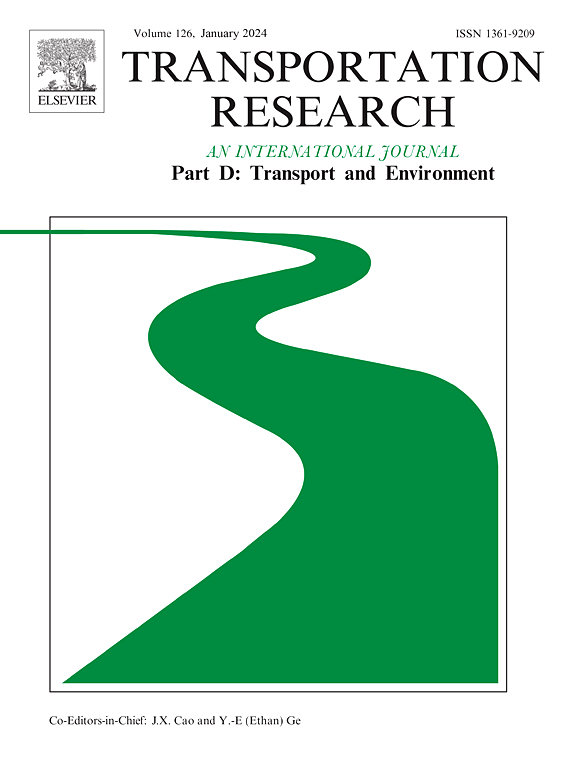Railway and road traffic noise annoyance of residents in high-rise apartments
IF 7.3
1区 工程技术
Q1 ENVIRONMENTAL STUDIES
Transportation Research Part D-transport and Environment
Pub Date : 2025-06-06
DOI:10.1016/j.trd.2025.104856
引用次数: 0
Abstract
This study investigated noise exposure relationships among high-rise apartment populations. Field noise measurements were conducted at four sites, three of which were primarily exposed to railway noise. Noise maps were created to calculate noise exposure levels for each dwelling, and social surveys were conducted with 400 participants (100 from each site). Railway noise was more annoying than road traffic noise for residents of high-rise apartments, confirming the lack of a railway bonus. A comparison of the exposure–response relationships with previous studies revealed that road traffic noise was reported to be less annoying than in prior studies, whereas railway noise was more annoying. Even at low noise exposure levels, railway noise was highly annoying. Annoyance ratings were significantly scattered across noise exposure levels, suggesting that factors beyond noise exposure, such as attitudes towards sources and vibrations, influence noise annoyance.
高层公寓居民的铁路和道路交通噪声烦恼
本研究调查了高层公寓人群的噪声暴露关系。在四个地点进行了现场噪音测量,其中三个地点主要受到铁路噪音的影响。研究人员绘制了噪音地图来计算每个住宅的噪音暴露水平,并对400名参与者(每个地点100人)进行了社会调查。对于高层公寓的居民来说,铁路噪音比道路交通噪音更烦人,这证实了铁路补贴的缺失。与先前研究的暴露-反应关系的比较显示,据报道,道路交通噪音比以前的研究更令人讨厌,而铁路噪音则更令人讨厌。即使在低噪音水平下,铁路噪音也非常令人讨厌。恼人程度在不同的噪音暴露水平上明显分散,这表明噪音暴露之外的因素,如对噪声源和振动的态度,也会影响噪音烦恼。
本文章由计算机程序翻译,如有差异,请以英文原文为准。
求助全文
约1分钟内获得全文
求助全文
来源期刊
CiteScore
14.40
自引率
9.20%
发文量
314
审稿时长
39 days
期刊介绍:
Transportation Research Part D: Transport and Environment focuses on original research exploring the environmental impacts of transportation, policy responses to these impacts, and their implications for transportation system design, planning, and management. The journal comprehensively covers the interaction between transportation and the environment, ranging from local effects on specific geographical areas to global implications such as natural resource depletion and atmospheric pollution.
We welcome research papers across all transportation modes, including maritime, air, and land transportation, assessing their environmental impacts broadly. Papers addressing both mobile aspects and transportation infrastructure are considered. The journal prioritizes empirical findings and policy responses of regulatory, planning, technical, or fiscal nature. Articles are policy-driven, accessible, and applicable to readers from diverse disciplines, emphasizing relevance and practicality. We encourage interdisciplinary submissions and welcome contributions from economically developing and advanced countries alike, reflecting our international orientation.

 求助内容:
求助内容: 应助结果提醒方式:
应助结果提醒方式:


